{{!completeInfo?'请完善个人信息':''}}
精准高效领先的融资对接服务
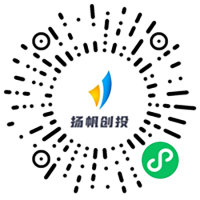

From its launch in 2020 to the present, CapCut has managed to enter the global market in just two years and, within one more year, achieved monetization and paid conversions.

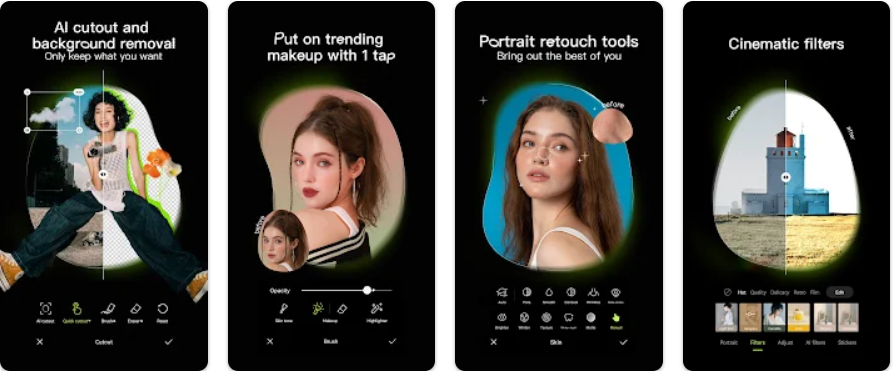
Yesterday, data.ai shared a statistical data point: as of September 11th, ByteDance's CapCut achieved a new milestone. CapCut has surpassed $100 million in cumulative revenue on both iOS and Google Play platforms worldwide, making it the top-grossing video editing app in the first half of 2023.

From its launch in 2020 to the present, CapCut has managed to enter the global market in just two years and, within one more year, achieved monetization and paid conversions. ByteDance's deep integration of TikTok with popular templates has allowed them to successfully create a top-ranking video editing tool. CapCut's success has opened up possibilities for the company in terms of monetizing tools through international expansion.
Taking advantage of the AI+image trend that peaked at the end of 2022, ByteDance launched a new product at the end of last year called Hypic: Photo Editor & AI Art, which focuses on image editing. Over the course of more than nine months, Hypic has steadily climbed the ranks, and it is currently making strides in countries like the United States and Vietnam. In this process, you can see ByteDance's familiar strategy yielding results and their ambitious plans for the tool sector.
Part 1: "Xingtu" Ventures Abroad – First Attempt in AI Photo Editing
Comparing the launch times of Jianying and its overseas version, CapCut was first introduced to the Chinese market in May 2019. ByteDance initially validated the development potential of Jianying in the domestic market. Eleven months later, in April 2020, CapCut entered the overseas market, joining the battle for video editing apps' international expansion.
Looking at the timing of Hypic's launch and its product name, it appears to be a product born in response to the times. In December 2022, there were two waves of AI-related trends in the overseas market. First, there was the emergence of ChatGPT, which garnered global attention for large AI models. In the same month, Lensa and Meitu released features for "AI-enhanced" images and AI-generated avatars. Leveraging the keyword "AI" in their names, several image editing apps experienced a surge in downloads.

In the field of image editing, ByteDance has already developed its exclusive products. In the domestic market, ByteDance's subsidiary, Shenzhen Lianmeng Technology Co., Ltd., incubated the image editing software "Xingtup" as early as April 2020.
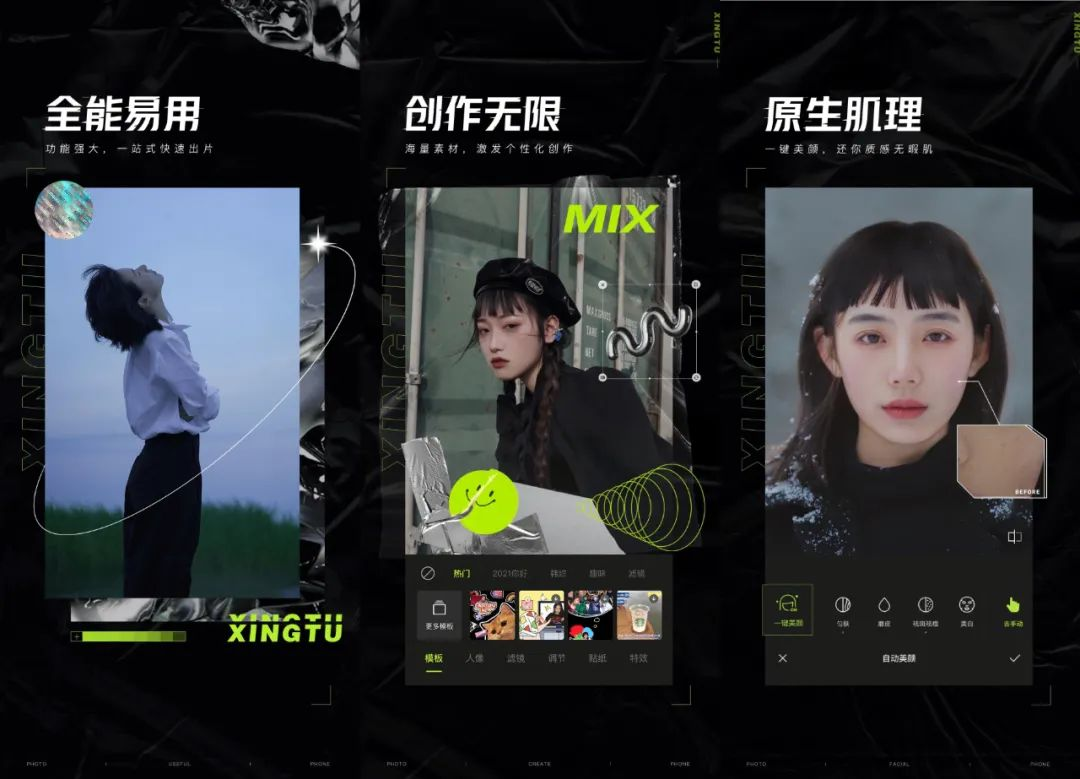
Perhaps it's because they recognized the opportunity in AI photo editing that Hypic, bearing a logo identical to that of Xingtup, was launched by the end of 2022, with "AI" added as a keyword in its title suffix. According to previous version records, Hypic introduced the "Transform Image into AI" feature in the early stages of its app release. As of today, AI image functionality still holds a prominent place in its promotional banners.
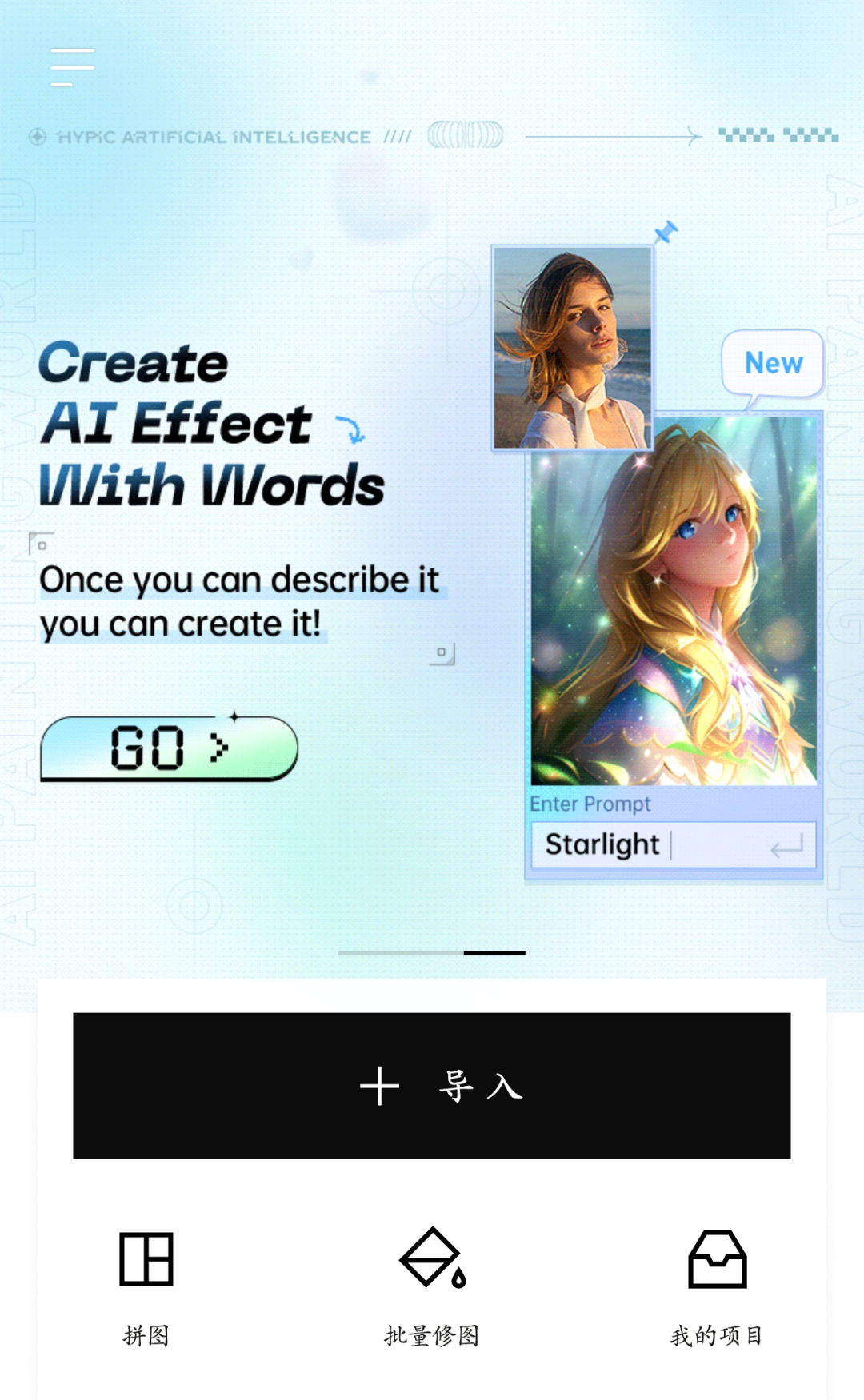
Compared to similar photo editing products on the market, Hypic's "Transform Image into AI" feature stands out for its richness in style options and impressive transformation results. It offers a variety of artistic styles to choose from, including Vintage, CG (digital style), Comic (comic book style), and more.

When I tested Hypic with a picture of a cat, it returned an incredibly cute image of a beautiful girl – surprisingly, both images seemed to match quite well in terms of composition and shapes. After generating the image, you can easily share it on TikTok with just one click, further promoting viral sharing.


To attract users with its AI features during the initial months of launch, TikTok likely collaborated with several influential bloggers to create promotional videos. For instance, TikTok-certified influencer @davidddodle, with 2 million followers, posted an AI effects video on TikTok. In the video, he wore a suit in front of a green screen, demonstrating how a single photo could be transformed into various comic-style images with ease.
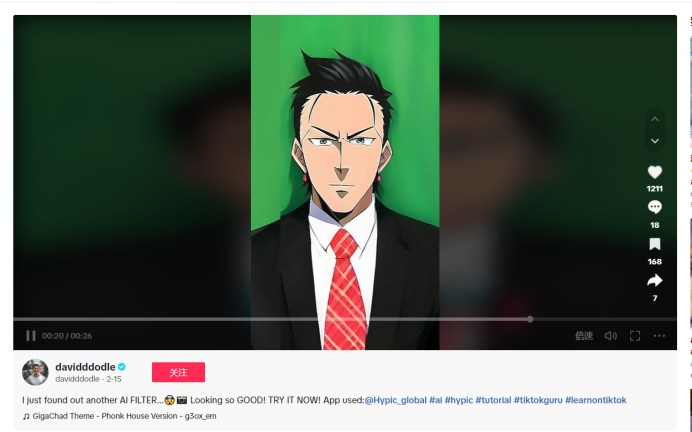
Part 2: Hypic's Rise to Fame – A Winning Combination of Templates, Influencer Marketing, and Creator-Friendly Features
Compared to CapCut's user acquisition strategy, it's evident that Hypic is currently in a more conservative phase. While CapCut started multi-platform user acquisition in its second month of release, Hypic briefly ran a low-scale ad campaign in July this year and then stopped.
However, Hypic remains active on its official social media accounts. On its primary promotional platform, TikTok, the official account @Hypic Global consistently updates its content at a rate of 1-2 posts per day. These updates typically feature demonstrations of individual photo editing features and real-time effects. Furthermore, Hypic has established an official account on its competitor platform, Instagram (Ins), where it regularly posts content.
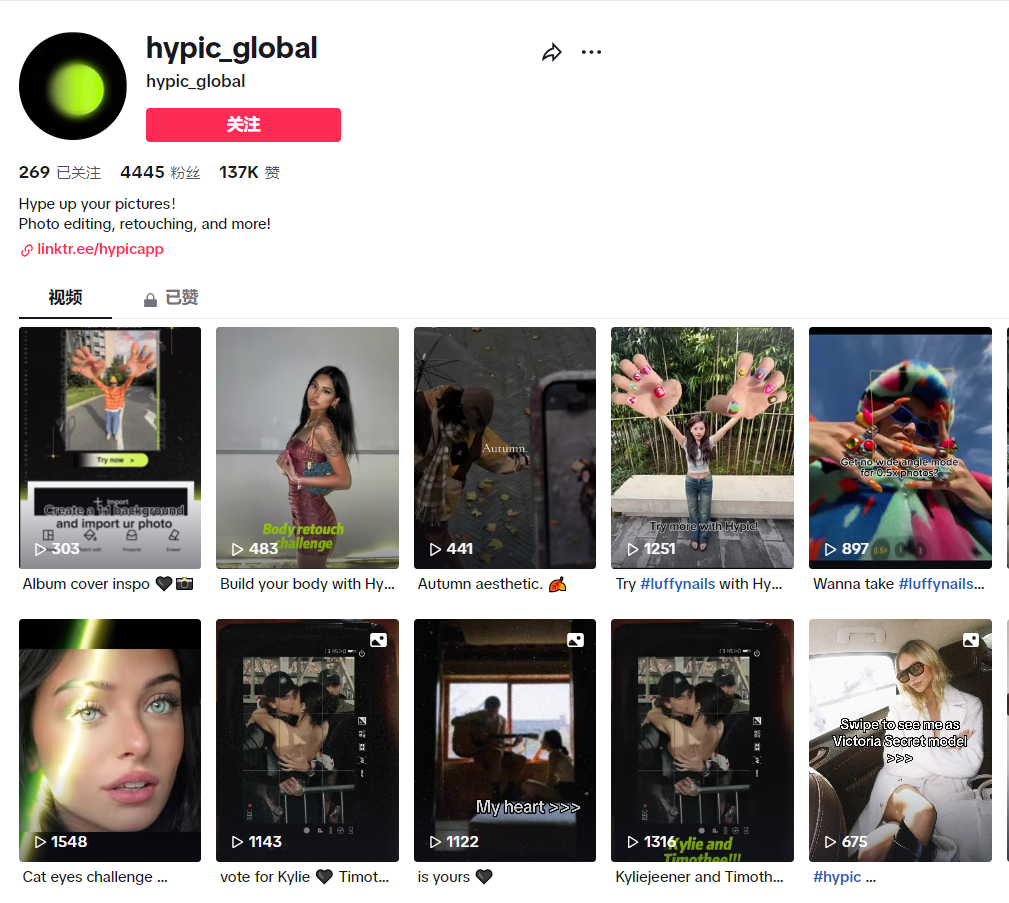
With a strategy that combines user-generated content, official promotion, and topic guidance, Hypic has achieved impressive results in terms of its ranking ascent, even without extensive user acquisition campaigns. According to extensive data, as of the time of writing, Hypic has entered the Top 100 rankings in the "Photography & Video" category in 136 countries. The platform primarily focuses on the European and American regions as its main target markets.
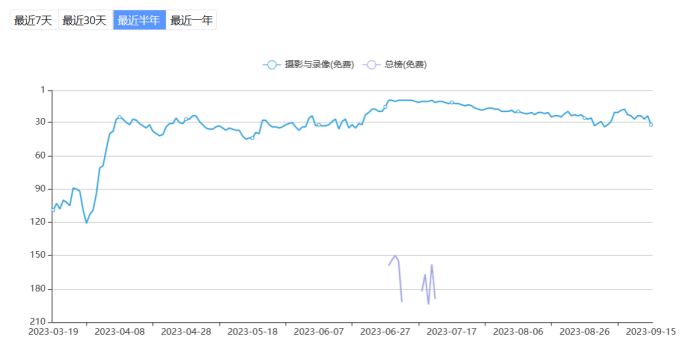
Looking at the corresponding time points, Hypic showed significant increases in its rankings on March 4th, April 9th, and June 27th. In the context of TikTok, we can indeed see the effective utilization of user-generated content (UGC). For instance, in April, tutorials about "faceless" photo editing garnered impressive views, likes, and engagement, with several videos surpassing a million views.
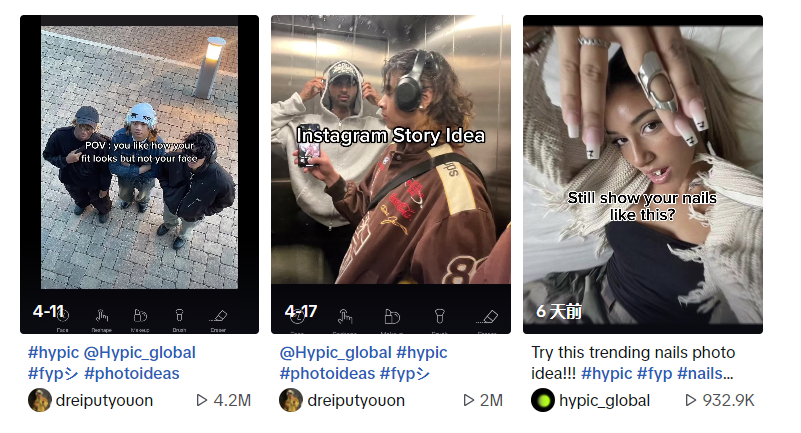
In addition to features like mosaics and face-blocking effects, Hypic has also introduced some novel features such as the "fish-eye" lens effect and creative templates like "Show Off Your Nails?" These innovative templates serve as excellent catalysts for virality. For instance, in a previous report, we mentioned the impact of CapCut's self-created "Halloween" video templates on its traffic.
Hypic also encourages users to create their own templates. On the Hypic homepage, you'll find a prominent "Creator Program" recruitment section. According to the program, for every download a self-created template receives, the user can earn $2 in revenue.

Interestingly, despite Hypic's primary target being European and American countries, the country with the highest number of downloads is Vietnam. According to extensive data, Hypic's downloads in Vietnam alone account for 40% of the total downloads. What's even more surprising is that the iOS version of Hypic doesn't appear to have a localized language version for the Vietnamese market, while the Google Play version has been localized to Vietnamese.
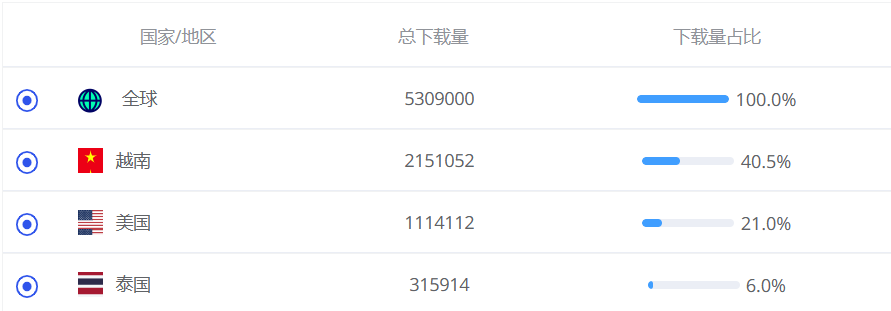
After some investigation, I discovered something quite interesting—Hypic's Chinese version, "醒图" (Xingtu), had already become a favorite among Vietnamese users two years ago. I found many Vietnamese-language videos on YouTube under the tag #xingtu, with themes like "How to use a VPN to download the Chinese app '醒图'" and bloggers enthusiastically teaching viewers how to achieve various beautiful effects using Xingtu. It can be said that Hypic's success in Vietnam was already brewing in the atmosphere.
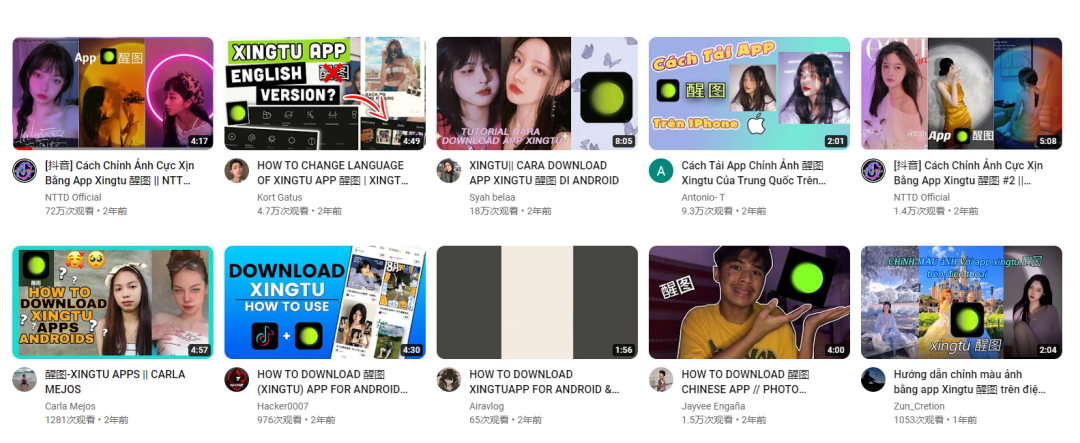
Part 3: CapCut Hitching to TikTok, Is Lemon 8 the Antidote for Hypic?
Speaking of Hypic's promotional efforts and collaborations with influencers, their choices have been remarkably precise, with no hesitation about the media's attributes. Hypic has targeted platforms primarily focused on images and text, such as Instagram and Pinterest, and has taken action accordingly. For instance, on Instagram, some influencers share beautiful photos and mention the app, guiding their followers to download it.

Additionally, within the Hypic app, specifically for image template styles, they've created an "IG" tag to teach users how to quickly create more Instagram-worthy photos. TikTok's tutorial videos also include a significant amount of content centered around the theme of "Teaching You to Create Cool Instagram Photos."

Speaking of visual content, we can't ignore another product ByteDance has heavily invested in this year for the overseas market – Lemon 8. Positioned to compete with platforms like "Little Red Book" and "Instagram," although Lemon 8 is currently in a fluctuating state in the European and American markets, its content focus naturally aligns with Hypic.
However, when it comes to sharing content, ByteDance has not yet fully connected the two. They've only used the Lemon 8 platform for some cooperative promotions. Take the Vietnamese market as an example; if you search for Hypic, you'll find plenty of influencers on the platform sharing various magical Hypic operations – such as one-click makeup and "ironing out wrinkles."
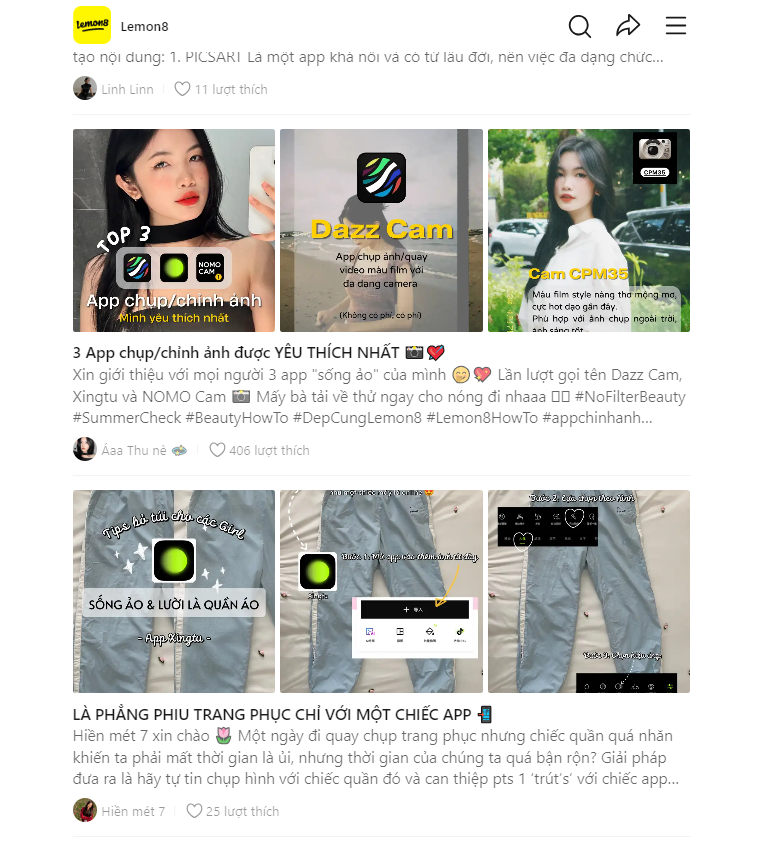
Currently, Hypic, in terms of user base and overall reach, lags far behind CapCut, and its monetization plans seem distant. Can it create the next "CapCut" relying solely on TikTok? Judging by the current scale of Hypic, there may still be some way to go. Will it take the time to grow like "Lemon 8"? Perhaps Hypic doesn't intend to wait that long.
·END·
文章作者:Sailing Global
版权申明:文章来源于Sailing Global。该文观点仅代表作者本人,扬帆出海平台仅提供信息存储空间服务,不代表扬帆出海官方立场。因本文所引起的纠纷和损失扬帆出海均不承担侵权行为的连带责任,如若转载请联系原文作者。 更多资讯关注扬帆出海官网:https://www.yfchuhai.com/

{{likeNum}}
好文章,需要你的鼓励
 已关注
已关注
 关注
关注

微信号:yfch24

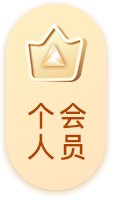

微信号:yfch24
小程序

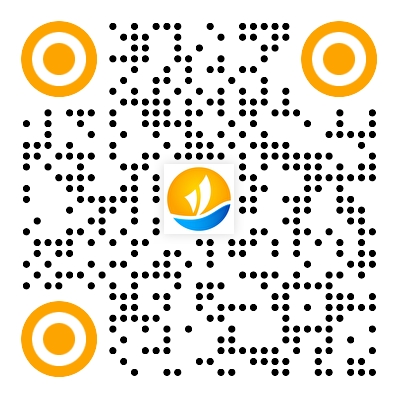
公众号

社群















